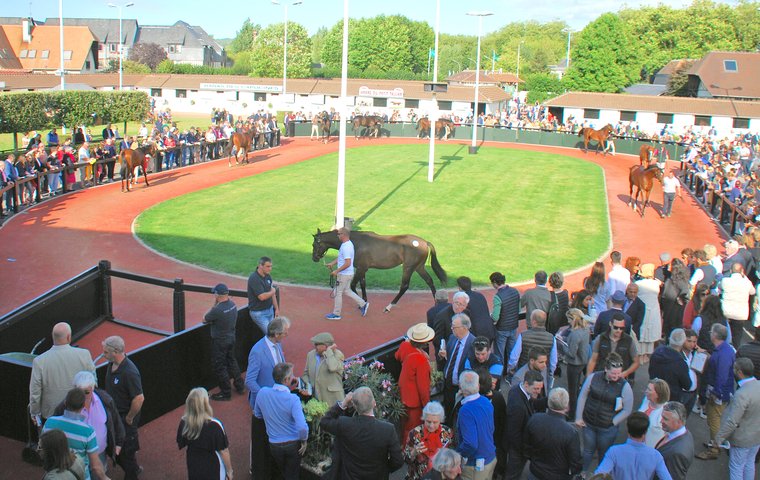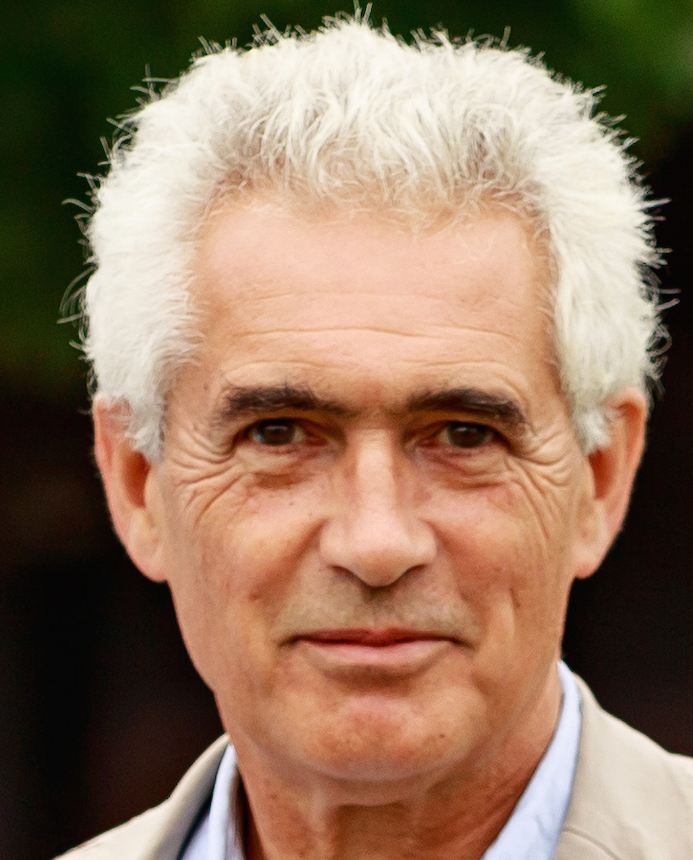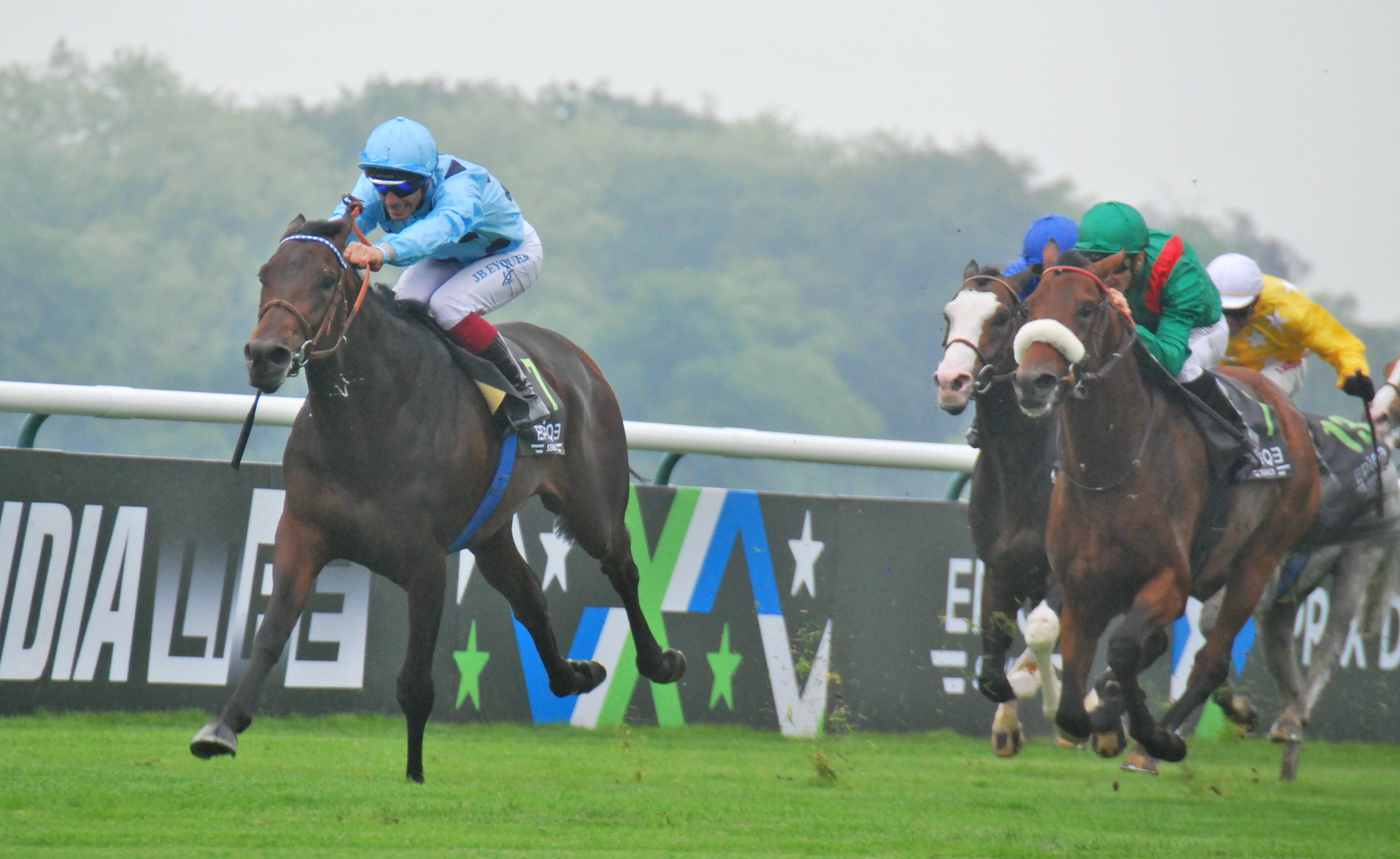
The Arqana August International Yearling Sale, one of the world’s most important racehorse auctions, takes place at Deauville in just over two weeks (August 14-16). It is making a welcome return to its familiar mid-August slot after being delayed until September last year due to the pandemic.
 So what are the prospects for the sale? How have the twin challenges of Covid and Brexit affected planning for it? And how strong is the catalogue? Here Arqana President Eric Hoyeau (photo: @ZuzannaLupa) tells John Gilmore about his optimism ahead of sale, and the strengthening state of the racing and breeding industry in France generally.
So what are the prospects for the sale? How have the twin challenges of Covid and Brexit affected planning for it? And how strong is the catalogue? Here Arqana President Eric Hoyeau (photo: @ZuzannaLupa) tells John Gilmore about his optimism ahead of sale, and the strengthening state of the racing and breeding industry in France generally.
JG: How would you assess the quality on offer at next month’s sale, and are there certain horses to look out for?
EH: The August sales return to their original format after the 2020 modified format. The level of the August 2021 catalogue seems strong, with excellent sire power, as is evident by the list of French and international stallions, highlighted on this page on the Arqana website.
The Arqana group resulted from a merger of Agence Francaise and Goffs France. What has changed in the way the company operates?
The creation of Arqana dates back to 2006, and the merger between the two companies has resulted in constant growth. If we exclude 2020, the sales format of August has been reduced to three days with a higher concentration targeting the international market for yearlings showing a certain physical maturity.
We have also created an additional day called V2, with horses selected for their precocity - the sale produced Coeursamba, a black-type filly at 2 and winner of this year’s Poule d’Essai des Pouliches.
Regarding the yearling market, Arqana has strongly developed the October sale - in a way its Book 2 for the yearlings needing additional weeks, and has multiplied its turnover by four since 2005.
You’re in competition in Europe with other leading sales companies to attract as many of the best-bred commercial yearlings as possible. What factors can make the difference?
In a very established European program, each company must offer the format corresponding to its local demand but also strengthen it with top-quality-bred yearlings to cater for the international buyers’ demands.
This entails a tremendous amount of work throughout the year in selecting the yearlings by our bloodstock team, which has grown a lot stronger over the years through the creation of Arqana.
With the Covid pandemic causing travel restrictions, what measures have been put in place by Arqana to try to overcome the problems?
All the horse sales companies in the world have developed their digital communications since last year, offering the ability to gauge the quality of the yearlings’ physical attributes through photos and video. This has allowed online bidding for international buyers to operate remotely, and veterinary files can also be examined remotely.
What major difficulties did Arqana face due to the Covid pandemic in visiting and selecting yearlings for the sale?
The inspections in France were able to take place in the normal way. But we had to adapt to the quarantine regulations for our visits abroad, which were carried out by the team organising our breeze-up, which took place in May at Doncaster with the hospitality of Goffs UK.
All things considered, how would you rate the quality this year compared with recent sales?
Judging the quality of a catalogue is always quite subjective, but it is certain that our 2021 catalogue is among the best of the decade.
Arqana sells a lot of quality yearlings. Last year was no exception despite the pandemic, the highest price being €2.5 million. However, increasingly horses sold for €500,000 or more in the last few years have been bought by foreign owners, and most don’t end up staying in France to be trained. Is this something the industry should be concerned about?
Despite some fluctuations, the destination of yearlings bought in France is generally as follows: A third are acquired by French buyers to race in France; a third go to non-resident buyers to race in France; and a third are bought by non-residents for export. For a producing country with a varied racing program, I think this is a good ratio.
The French 20 percent VAT on buying racehorses is a lot higher than in Ireland, though the same as in Britain. Do you feel this stops new French owners coming into racing, or are there other issues?
The VAT rate in France is equivalent to the UK and differs somewhat from Ireland’s 9-13 percent, depending on the operation. The rate in France for breeding mares and fillies coming out of training covered by a stallion is lower at ten percent. French racing is currently in negotiations to try to obtain a VAT rate of ten percent for sales within two years.
France is therefore not completely out of step with other European countries. On the other hand, it is advisable to prepare to respond to the economic and legal organisation best suited to racing and breeding horses in each of these countries. It’s the same in the USA. At Arqana, we are working to provide owners and breeders in France with the contacts and necessary administration work to help them in racing.
French prize money is far superior to England and Ireland, especially when you add the additional premiums for French-bred horses. But it doesn’t seem to be encouraging owners to have their top horses trained in France, with Group races here being regularly won by British- or Irish-trained horses over the past few years. This includes the Prix du Jockey Club and Prix de Diane for the past two years, and the first three home in the Grand Prix de Paris this month, despite travel difficulties. Is this a serious problem?
The Group races in general owe their credibility to their international aspect. [The Aidan O’Brien-trained] St Mark’s Basilica won the Prix du Jockey Club after the Poule d’Essai des Poulains and subsequently confirmed his status as the best 3-year-old [in Europe] in the Coral Eclipse Stakes, and this demonstrates the value of French Classic races, just as Mishriff’s victory in the Jockey Club did last year.
When Almanzor, who was bought as a yearling at the Deauville August yearling sale and was trained in France, won the 2016 Jockey Club, then the Irish and English Champion Stakes, no one questioned any failure of the level concerning the English and Irish horses.
Siyouni and Le Havre are among the top stallions in France, but the majority of major Europe’s leading stallions are based in England and Ireland. Vadamos, trained in France by André Fabre and a Group 1 winner of the Prix Moulin, retired four years ago and was sold to Tally Ho Stud in Ireland by Haras De St Pair because no stud in France would pay the buying price. Are French studs not prepared to take a risk?
I’m sorry, but you have to consider that the quality level of the French stallions has evolved tremendously over the past decade. Siyouni and Le Havre are proof of that. Wootton Bassett has also proved it. Even though he was sold to Coolmore last year from Haras d’Etreham, the stallion remains European.
Among the young stallions in France are Almanzor, Hello Youmzain, Zizal and Al Wukair. Galiway and Kendargent are established stallions and many others have joined the French stallion rosta..
As for Vadamos, he has joined Coolmore’s Grange Stud to continue his career in the National Hunt stud market. Just as races need an international character to ensure a high level of competitiveness, stallions follow the same principle.
French breeders for some time have been forced to send mares to be covered by English or Irish stallions, simply because of the limited number of top stallions in France. Should this be a concern?
In 2021, despite the travel restrictions but above all to the new rules imposed by the introduction of Brexit, each of the countries holding a valuable mare yard sought to use the European stallions corresponding to their breeding plans.
French mares continued to travel to England and Ireland and English and Irish mares continued to come to France for their best flat but also National Hunt stallions.
Do you think there is a need to bring back a national stud to help the French breeding industry obtain better quality stallions?
The French National Stud in the Orne region of Southern Normandy certainly fulfilled its function, producing French National Hunt horses prior to 2000.
Yet it was never able to demonstrate its effectiveness in the modern stallion market. I remain convinced that, despite [the success of] the Irish National Stud, which is ultimately a semi-public company, business reality means a state involvement in breeding racehorses in France is neither desirable nor feasible.



